Well, it's over. May is done, and so is the Every Day in May challenge. I'm actually a little relieved. It was fun, but it was also a little annoying at times trying to come up with something intelligent or poetic to say. So, some days I took the easy way out and just posted videos. Other times, I was completely BS-ing, just trying to basically fill a quota just to fill a quota.
After having done the challenge, though, I've gained a bit more motivation to post more regularly. Before this month, the last time I posted was in October. Doing the challenge stirred up a bit of creativity that's been pretty dormant for a while. It'll take a while before I can start to realize the ideas I have in my head, because there's a bunch of new equipment and software I need to buy, but I'm real excited to start.
Inspiration/Aspiration
Grand vistas, good music, family—these are a few things that inspire me.
When I hear the words inspire, or inspiration, I think of things that uplift. Uplift me mentally, and spiritually. It's always been at the forefront of why I photograph. The Apostle Paul (in Phillipians 4:8) summed up my goals:
Finally, brethren, whatsoever things are true, whatsoever things are honest, whatsoever things are just, whatsoever things are pure, whatsoever things are lovely, whatsoever things are of good report; if there be any virtue, and if there be any praise, think on these things.
The Thirteenth Article of Faith also expresses my aims of my photography:
We believe in being honest, true, chaste, benevolent, virtuous, and in doing good to all men; indeed, we may say that we follow the admonition of Paul—We believe all things, we hope all things, we have endured many things, and hope to be able to endure all things. If there is anything virtuous, lovely, or of good report or praiseworthy, we seek after these things.
In an age where there's a lot of junk in the Art world, and not just the Art world, but the world in general, I got criticized a lot for being too traditional, or romanticizing the land too much. Back when I was in college, I let those criticisms get to me, and I felt insecure, and inadequate as a photographer. Since then, I've gotten over those feelings, and I no longer care that my photographs are too "romantic." All around us, we are bombarded with filth that desensitizes us. What was once considered immoral in years past is now celebrated and glorified. That is why I chose to photograph how I photograph.
I don't get out much to photograph any more. In fact, any photographs I do make coincide with my fishing outings, and the subject matter is pretty much all the same: rivers. Despite that I still endeavor to create photographs that inspire, and uplift, and to express my love and gratitude to God for the Earth He has given us.
Bucket List
Being an avid back packer, fly fisher, and climber, there are several things on my bucket list. Maybe by writing them down here, I may be held to getting a few of them crossed off.
Fly fish Patagonia
Fly fish New Zealand
Backpack the entire Continental Divide Trail (even if I have to do it in stages)
Climb El Capitan
Climb The Grand Teton (no, I've never bagged that peak)
Go after steelhead in British Columbia
Fly fish for bonefish, tarpon and redfish
I'd put down a trip up Everest, but I have to be somewhat realistic with this list
Lastly, I think the biggest thing on my list is to just be happy and enjoy life whether I'm half way through a pitch on the Nose of El Cap, double hauling to bonefish on the Florida flats, or sleeping under the stars somewhere between Canada and Mexico.
Lessons Learned
If fishing the Logan River has taught me anything, it's this: fly fishing can be inconsistent, frustrating, puzzling, but above all, satisfying and rewarding, even when I walk away without having caught a fish.
Almost every day on the Logan is different. One day there will be plenty of fish holding in exactly the spots you'd think they are. They'll take the first fly you float past them, over and over, and, if you don't lose it to a tree, fly changes are hardly needed. Then the next day, you return, with more or less the exact conditions as the day before, and the fish will be nonexistent. You'll change flies at least a dozen times, trying to hone in on what might be in or on the water. Or, those blasted trees just won't stop reaching out and sucking every fly you tie on.
Despite all the frustration of untying wind knots, or pulling a fly from a branch, or fighting swift current on slick rocks, I still drive away rested and calmed. Not always physically, but mentally, as well as spiritually. After all, I've just spent that time among God's handiwork, wading in a river He's made. Some places, I think, He made just for me. All places, I know, He made for us all.
Memory
Safety First
...or as Red Green puts it, safety forst.
Here's a video of some examples of what not to do while fishing:
Runoff
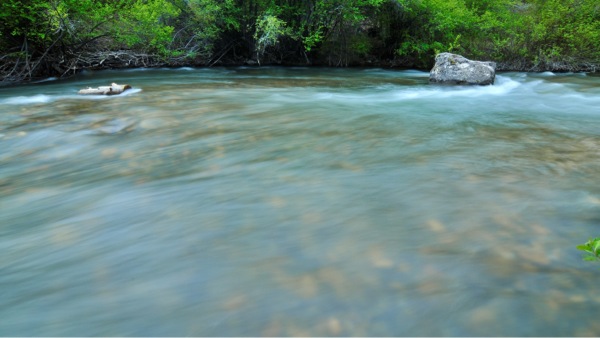
The runoff here on the local rivers hasn't been at all as bad as it was last year. I think it's about hit its peak, and won't be long until they recede back to normal (perhaps lower, considering this winter's low snow pack) levels. The fishing hasn't been hit as hard as it was last year either. Mostly because the rivers are actually safe to wade in. Well, safer than last year.
Once the water does recede, you can be sure I'll be on the water even more than I have been. I just hope I've stocked my fly boxes with enough flies.
Green Drake
(Green) Logan Canyon
Recently, I've been getting into making time lapse videos. Here are my first two attempts from Logan Canyon, which has changed from the dead brown grass and leafless branches to full green.
Fish, Fish, Fish
Here Fishy Fishy
If only fishing were that easy.
Then again, the puzzle of fly fishing, and the mind games that you sometimes have to play are things that attract me to fly fishing. I don't think I'd enjoy it nearly as much if the fish simply jumped into my hands.
The Fly
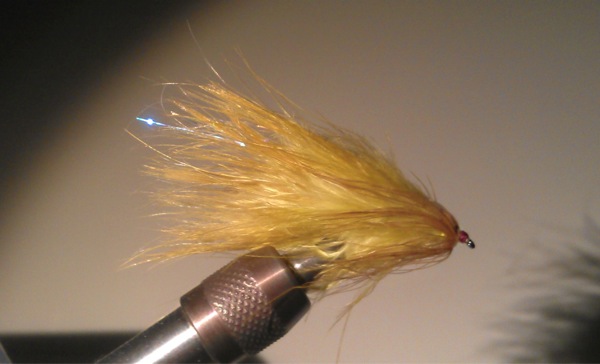
After the rod, line, and leader, we finally arrive to the fly.
One of the earliest records of people using artificial flies to catch fish dates back to around the Meridian of Time, from one Marcus Valerius Martialis, who wrote:
...Who has not seen the scarus rise, decoyed and killed by fraudful flies...
Then, about two hundred years later, we have this from Claudius Aelianus:
...they have planned a snare for the fish, and get the better of them by their fisherman's craft. . . . They fasten red wool. . . round a hook, and fit on to the wool two feathers which grow under a cock's wattles, and which in color are like wax. Their rod is six feet long, and their line is the same length. Then they throw their snare, and the fish, attracted and maddened by the color, comes straight at it, thinking from the pretty sight to gain a dainty mouthful; when, however, it opens its jaws, it is caught by the hook, and enjoys a bitter repast, a captive.
Fast forward another fourteen hundred years or so, and on up into the nineteenth century to Britain, and we come to what most fly fishermen think of when we hear about historical fly fishing: bamboo rods, silk lines, and wicker creels.
The Japanese tied flies by holding the hook in one hand, and wrapping the thread around the materials with the other, without using a bobbin, like we tyers use today.
So, fish have been taken on the fly for at least two thousand years. For two thousand years, fish have been fooled into eating fake insects, and for two thousand years, fishermen have been skunked by fish who were smart enough to know not to eat the fur and feathers that looked like the mayflies all around it.
I guess that's one of the things that draws me to the sport. That one day the fish will be eager to take a fly, and the next, they won't even acknowledge its presence.
The Leader
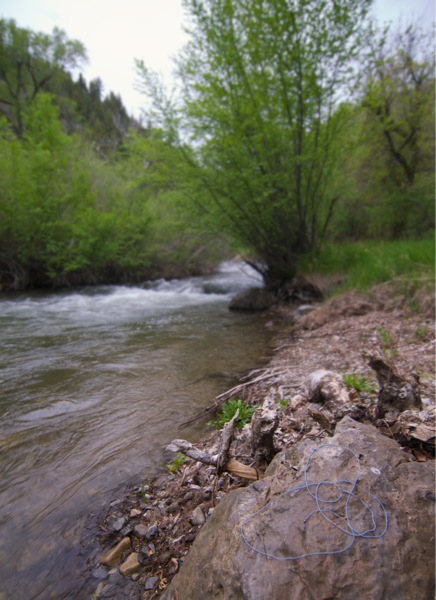
A good rod can turn over a long leader. A good leader can turn over a small dry fly delicately to convince those picky fish that the bit of thread, feathers, and fur tied on that piece of sharp metal wire is really a delicious meal.
About two years ago, I read an article on, I think MidCurrent, all about furled leaders, and how great they were. So I did some searching the Internet, and found little company that made and sold them, and I paid the higher price (furled leaders are generally 2-3 times more expensive than monofilament leaders), and I soon got the leader in the mail and attached to my fly line. It was almost life changing, not to be too overly dramatic. The leader turned over the smallest dry flies with ease, and beauty. I enjoyed watching the thing lay out almost as much as I enjoyed the whole act of fishing. I learned that they're a little more high maintanence than mono leaders—being made out of thread, they absorb water and eventually begin to sink, so they have to be treated with floatant periodically—but I found it was a trade I was more than willing to make.
After a few months, I started looking into how to make my own furled leaders, and it wasn't long before I had bought the materials to make a jig. I first made the jig according to a formula that some guy shared on a forum, then began playing with my own lengths and tapers, and after a few weeks I had settled on a satisfactory design. The way a furled leader is made, is thread is wrapped in interlocking loops around a series of pegs attached to a board, set at varying distances, and then the thread is twisted together to form a sort of cord, or rope that tapers just like a monofilament leader would, to taper down from the fly line to the tippet, to transfer the energy generated by the rod and line down to the fly to place it in range of a feeding fish.
I've since been selling my leaders through a few different places. It's not as profitable as I'd really like it to be—I'd like to make enough money for it to be my main source of income—but so far it's put enough money in my pocket to pay for my fishing licenses here in Utah, and Idaho.
The leader—and tippet—can really make or break a day on the water. Too big, and they can spook fish, or slap that tiny midge on the water and mess up that needed delicate presentation. Too small, and they fail to put that big hopper out where it should go.
The Line
There's something beautiful in watching a loop of line with a fly at the end sail through the air.
 Fly Fisherman by Stefan Feldmann |
The Rod
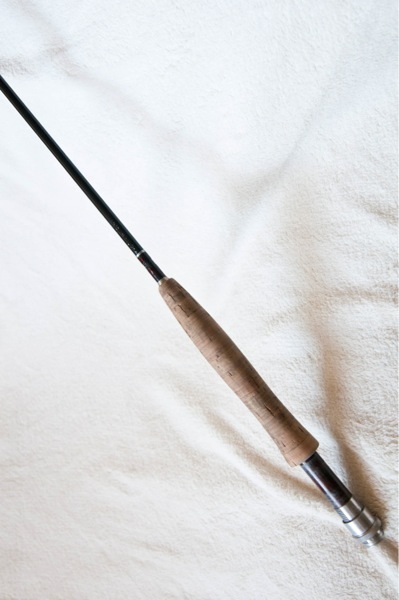
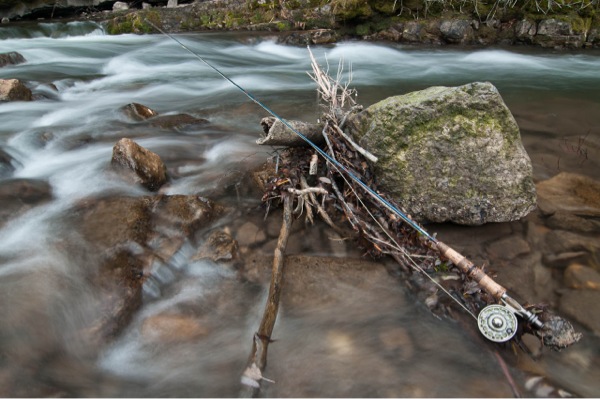
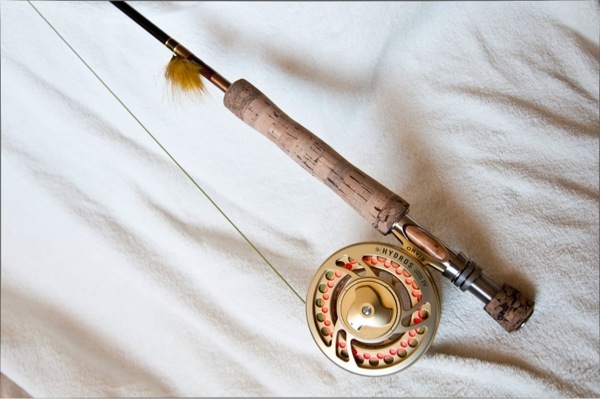
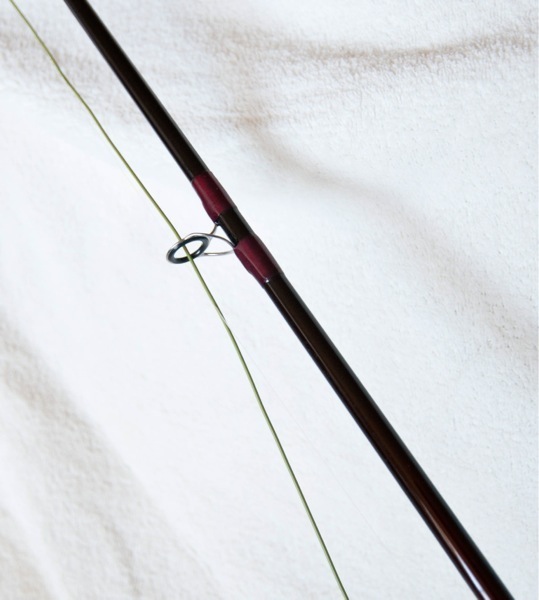
I love building my own rods. The rod I learned to fish on was one I built myself. It was just some cheap blank my dad got and then set me loose on. Looking at it now, it shows that it was built by a thirteen or fourteen year old, but it got me into something I enjoyed then, and love now. I still have that rod. It's a couple inches shorter now, so it casts a little faster than it did, but it's something I don't think I'll ever get rid of. Maybe it'll find a spot on my wall one day.
Later in high school, I just sort of got out of fly fishing for whatever reason, and only fished a handful of times until three years ago, when I was sitting in my bedroom one day in late winter, suffering from cabin fever, and figured I'd take up fly fishing again. The rod I got then, a 9' 5 wt. St. Croix, is the only rod I have that was bought complete. Since then, I've built a 7' 9" Sage 3 wt., which is now the main rod I fish here on the Logan and Blacksmith Fork Rivers, and a 9' 8 wt. that my dad had.
The reason I love—and prefer—to build my own rods, is because I have something that's built to my own liking. While I'm bound by what the rod manufacturers make, as far as blanks are concerned, I can take a blank and make it "mine". And then when I catch something on it, there's just that much more satisfaction out of the whole experience.
Mother's Day
I'm kind of at a loss here. I mean, what can I possibly say to adequately pay homage and honor my mother? Besides, maybe, thank you.
Thank you for being who and what you are.
Thank you for raising us kids, and teaching us.
Thank you for your example of selfless service.
Thank you for your generosity.
Thank you for helping me out, even though at times I didn't deserve it.
Thank you for just being you.
Picky Trout and Ambivalent Utah Suckers
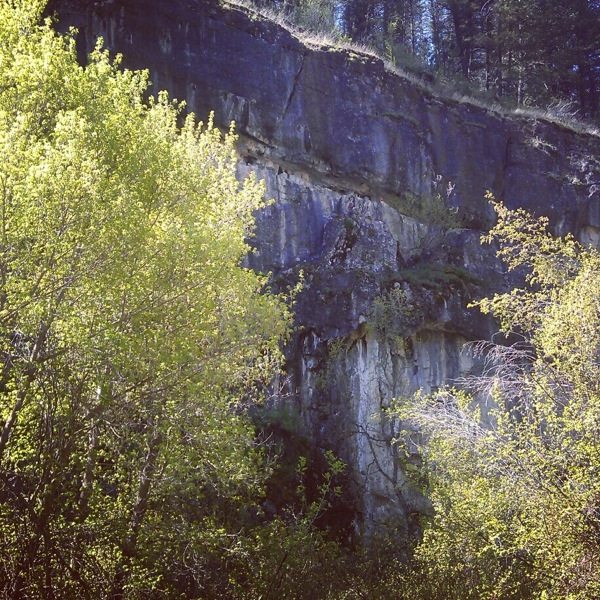
A month ago my 4Runner broke down (at first we thought it was a bad fuel pump, but it turned out to be a bad timing belt), and being without a vehicle, I haven't been fishing for that long. I even tried riding my bike up Logan Canyon, but this past winter was especially hard on my waist, and endurance. I didn't make it far before it was obvious riding my bike and wearing myself out and then trying to wade a river wasn't going to be the best thing to do. So I've been jonesing really bad to get out. Thanks to a friend I work with, we got the timing belt replaced, and the 4Runner fixed. So today I decided I'd spend the day swinging my fly rod.
I first planned on just going up to my new favorite stretch of the Logan River, knowing that the river was going to be high. I got on the water just before ten o'clock, and tied a new pattern I've been tying lately, a UV Epoxy Back Pheasant Tail Nymph, with a Woven Pheasant Tail Nymph behind it. Once I got in the water, and saw how high and felt how fast the water was, I knew I was going to be leap-frogging from hole to hole more than I thought I'd be. I fished all the promising spots, but if the fish were there, they weren't interested in biting my fake bugs.
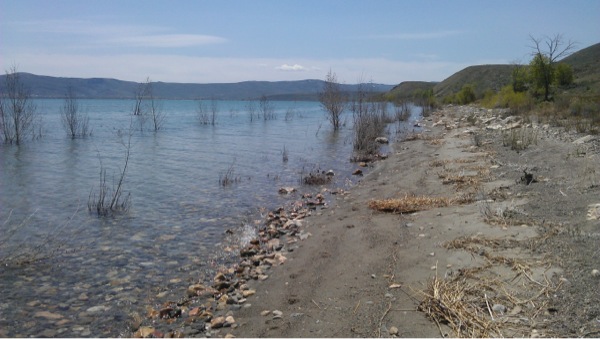
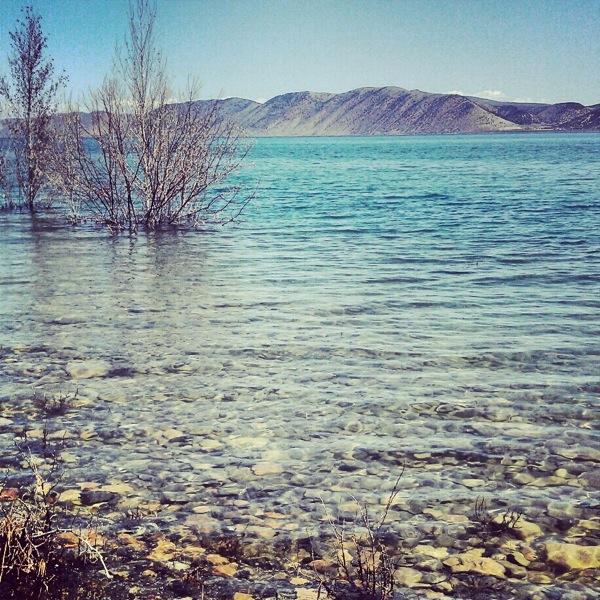
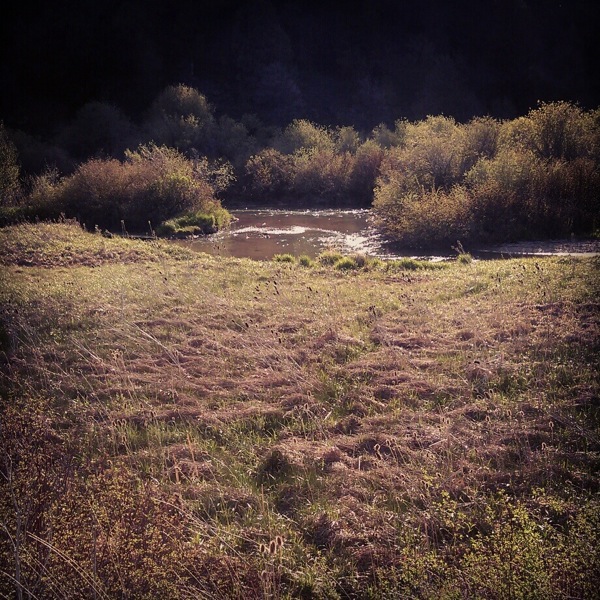
All in all, it was a fish-less day, but after more than a month of not being able to fish, it was still a very good day on the water. Or should I say, waters.
Grinning and Laughing
Well, I missed a few days in this challenge. At least as far as posting each day goes.
I've been busy the past few nights working on replacing the timing belt on my 4Runner, and getting a post here has taken a back seat to auto mechanics and sleep.
But now that the truck is fixed and running, and after having been absent from any river for about a month, I'm going to spend all day tomorrow on the water.
And I'll be grinning the whole day.
Waders
When I first learned to fly fish when I was about 14 or so, though I might have been 13 or 15, I did it without waders. I always wet-waded. We fished pretty much only in mid-summer into the fall, so we didn't really need waders to keep us warm and dry.
It wasn't until I got back into fly fishing, almost three years ago now, that I got my first pair of waders. To save money, I skipped out on the wading boots, and went with the only pair of shoes I had that would accommodate the thick neoprene boot: a pair of Etnies skating shoes. The soles were slick, and they offered no ankle support at all. I'm surprised I didn't get washed down the river. I've since upgraded to a pair of boots that grip the bottom a bit better, and give good support so I don't twist my ankle if they do slip.
I sometimes fantasize about showing up on the Madison, Yellowstone, or Missouri Rivers, among all the fishermen decked out in their Orvis and Simms gear (full disclosure: I own a lot of Simms gear and clothing, waders included), and throw on a pair of rubber hip boots, and umbrella hat, and a white tank top, and just start swinging a stick with kite string on it. I wouldn't do anything to spook the fish that the other fishermen are casting to, or be obnoxious, I'd just throw the biggest, ugliest flies, perhaps bass bugs, and act like nothing's wrong.
Sometimes we fishermen get caught up in getting the flashiest, newest stuff. Don't get me wrong. I believe in getting the best equipment you possibly can, whether it's fly fishing gear, or backpacking gear, and taking care of it, because it'll last a long time if good equipment is taken care of. But gear only assists the person using it.